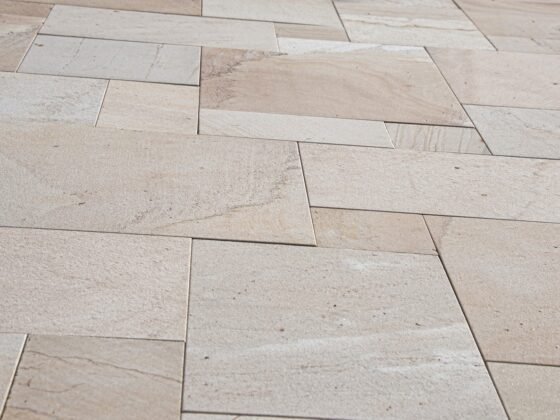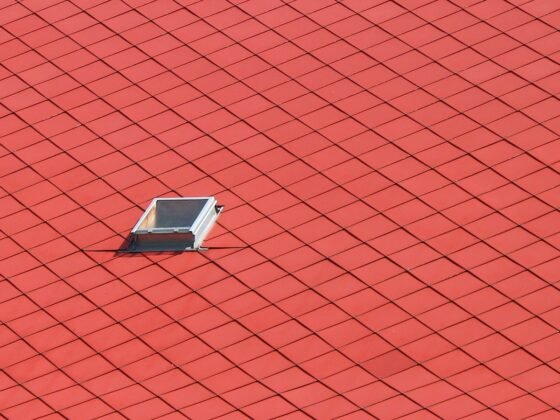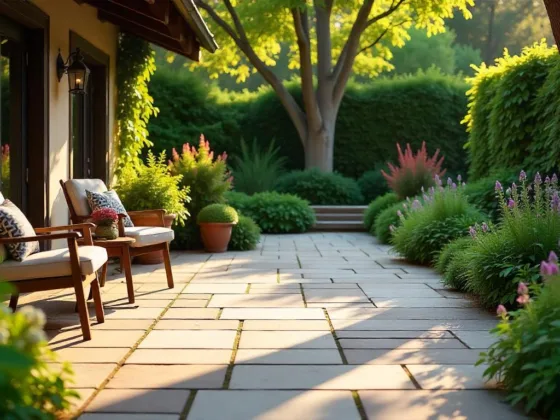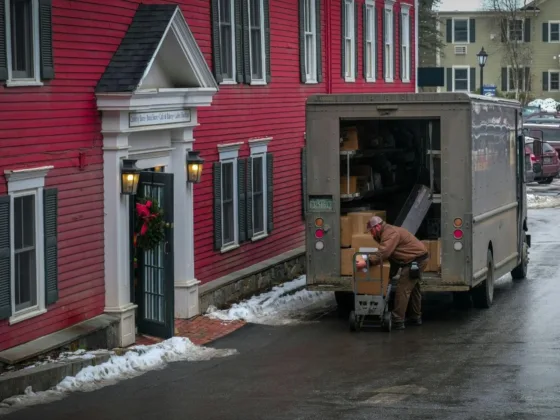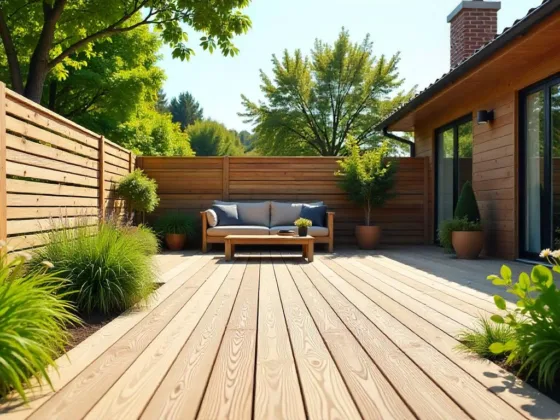Table of Contents Show
Introduction
When nature flexes its watery muscles, a flood-proof home becomes your frontline defense. Flood-proofing is all about reinforcing your home to minimize flooding disasters. It’s akin to donning a raincoat and waders before stepping into a storm—except for your house.
This proactive approach involves a variety of strategies, from elevating electrical systems to installing water barriers; the goal is to keep floodwaters at bay or at least reduce the potential damage.
Especially in vulnerable areas, where the whisper of rain brings a threat of floods, safeguarding our homes is non-negotiable. Our homes are not just physical structures; they’re vaults of cherished memories. Each photo album, hand-me-down recipe book, and scribbled note from a loved one is a stitch in the fabric of our lives.
By taking steps to protect our homes from flooding, we do more than shield bricks and mortar—we preserve the irreplaceable tokens of our personal histories that make our houses truly homes.

1. Understanding Flood Risk Evaluation and Insurance
When it comes to protecting your home from floods, it’s important to have the right information. That’s where FEMA (Federal Emergency Management Agency) and the NFIP (National Flood Insurance Program) come in. They are the experts when it comes to understanding flood risks and can provide you with the resources you need to keep your home safe.
FEMA and NFIP: Your Guides to Flood Safety
- What FEMA Does: FEMA is responsible for responding to disasters, but they also work to prevent them. They create maps that show areas at risk of flooding, which are used by communities and individuals to plan for emergencies.
- The Role of NFIP: The NFIP was created by FEMA to offer insurance coverage for flood damage. Most standard homeowners’ insurance policies don’t cover floods, so having this additional coverage is crucial.
How to Assess Your Home’s Flood Risk
If you’re unsure whether your property is at risk of flooding, here are some steps you can take:
- Visit the FEMA Flood Map Service Center and enter your address.
- Look at the map to see if your area is labeled as a high-risk zone.
- Reach out to your local government or an insurance agent who specializes in flood policies for a personalized evaluation.
The Importance of Flood Insurance
Having flood insurance is essential for protecting your home and belongings in case of a flood. While regular home insurance covers things like fire and theft, it typically doesn’t include flood damage. With flood insurance, you can have peace of mind knowing that you’re financially protected no matter what happens.
Just as fire doors are crucial in hospitals for preventing the spread of flames, evaluating flood risk and getting the right insurance are key steps in defending your home from water damage.
2. Assessing Your Home’s Vulnerability to Flooding
The twists and turns of climate change have brought more than just warmer winters and hotter summers; they’ve amped up the frequency and severity of natural disasters, particularly floods. It’s not just about watching the weather anymore; it’s about understanding how these global changes can turn your home into an unintended indoor pool.
Case in Point: Houston Floods
Remember the catastrophic Houston floods? They’re a stark reminder of nature’s force. In 2017, Hurricane Harvey slammed into Texas, turning streets into rivers and homes into ruins. The flood damage was a wake-up call for many. FEMA maps were redrawn, reflecting the harsh realities of climate change and its impact on flood plains.
Homeowner Homework: Assessing Weak Points
Here’s a DIY assessment to spot potential flood entry points in your cozy castle:
- Inspect the Foundation: Start with a solid foundation – literally. Cracks or gaps can invite unwanted water guests during heavy rains.
- Eye-Level Evaluation: Windows and doors are the usual suspects for leaks. Check for telltale signs like warping or mold.
- Survey the Surroundings: Is your home sitting lower than the street or downhill from a slope? Gravity isn’t your friend when it comes to water flow.
- FEMA Maps Consultation: Take advantage of FEMA’s online resources to see if your beloved abode is in a current floodplain.
Identifying these vulnerabilities early on sets you up for success in the next phase of flood-proofing – where prevention is key, and knowledge is your best tool. With a keen eye and some proactive planning, you’ll be ready to tackle exterior preparations that can keep you dry when the skies decide otherwise.
3. Exterior Preparations for Flood Prevention
Flood-proofing is not just about the interior of your home. Equally important are exterior modifications and landscaping techniques that can significantly reduce the impact of flooding.
One such method involves installing backflow prevention valves in your sewage system. These valves are designed to block sewage from flowing back into your home during floods. With a properly installed backflow valve, you can prevent the unpleasant and hazardous situation of sewage backup when floodwaters rise.
In addition to backflow prevention valves, clever landscaping can also play a significant role in flood mitigation. Techniques like creating swales – shallow, wide ditches designed to slow, spread, and sink runoff water -, using rain barrels to collect and store rainwater, and ensuring proper grading around your home can all contribute to directing stormwater away from your property.
Let’s break down these landscaping techniques:
- Swales: These are essentially low tracts of land designed to manage water runoff, filter pollutants, and increase rainwater infiltration. They can be an aesthetically pleasing addition to your garden while providing the practical benefit of diverting water away from your home.
- Rain Barrels: A simple yet effective tool for flood prevention, rain barrels collect and store rainwater from your roof that would otherwise contribute to runoff. This stored water can later be used for gardening purposes, making this a sustainable as well as practical solution.
- Proper Grading: The grade of your property should slope away from your home’s foundation. This simple yet crucial step ensures that water flows away from your house rather than pooling around it.
For tips on how to make your home more functional, including efficient water management, you may find this article on 12 Essential Tips to Make Your Home More Functional useful.
As we move towards safeguarding our homes against floods, it’s vital to remember that both the interior and exterior of our homes play a pivotal role in flood prevention.
4. Interior Measures for Flood Protection
Transforming your home into a flood-proof fortress involves interior tactics alongside exterior modifications. One such crucial defense mechanism against interior flooding is the sump pump.
What is a Sump Pump and How Does it Work?
Installed in the basement or the lowest part of your house, a sump pump works tirelessly to keep your home dry by pumping out water that collects in the sump basin and sending it away from your house.
The Importance of Regular Sump Pump Maintenance
Installing a sump pump involves more than just plugging it in and letting it do its thing. Regular maintenance, which includes cleaning and testing, ensures its longevity and optimal functioning. Ignoring this could leave you with a non-working sump pump right when you need it most, so stay vigilant!
Elevating Your Living Spaces
Moving upwards – literally! Elevating your living spaces can significantly reduce the risk of water intrusion. This might involve raising electrical outlets, switches, sockets, wiring, appliances, and even the entire structure where possible. It’s not a weekend DIY project, but consider speaking with a professional about your options if you live in a high-risk area.
Choose Waterproof Flooring Options
Let’s take a moment to talk about flooring. When you’re living with the constant threat of floods, waterproof flooring can be a lifesaver (or at least a floor-saver!). Several materials are known for their water-resistant properties:
- Vinyl: Affordable, easy to install, and comes in various styles.
- Ceramic or porcelain tile: Extremely water-resistant when correctly installed.
- Concrete: Durable and resistant to most types of damage.
- Certain types of rubber flooring: An excellent option for basements.
Making these changes may seem like a significant investment now but consider the potential cost of repairing flood damage. Home is where our heart is; let’s make sure it stays dry!
5. Utilizing Barriers and Sealing Methods
When floodwaters are rising, you need to act quickly to protect your home. Flood barriers are your best bet in these situations, as they act as guards against water intrusion. There are different types of flood barriers available, each serving a specific purpose:
Types of Flood Barriers
- Sandbag Substitutes: These are bags that expand when they come into contact with water, providing a quick solution for blocking doorways.
- Modular Flood Barriers: Designed to fit around doors and windows, these systems consist of interlocking panels that create a watertight seal.
- Temporary Shields: Water-resistant panels that can be easily installed whenever needed, offering protection against flooding.
Beyond using barriers, it’s essential to ensure that your doors and windows are properly sealed. This is where weatherstripping and caulk come into play, providing an additional layer of defense against water infiltration.
Steps for Sealing Doors and Windows
- Inspect: Check the condition of your existing seals for any signs of damage or wear.
- Choose Quality Materials: Opt for high-quality weatherstripping and waterproof caulk that can withstand water exposure.
- Clean Surfaces: Prepare the areas by removing dirt and old adhesive residues, ensuring better adhesion.
- Apply Weatherstripping: Install the weatherstripping tightly around door frames and along window sashes to create a seal.
- Seal with Caulk: Use caulk to fill any gaps between the frame and wall on the exterior, preventing water from seeping in.
Many homeowners see these sealing projects as an opportunity to take matters into their own hands when it comes to protecting their homes from floods. While flood barriers serve as the initial defense line, it’s the attention to detail in sealing that prevents those sneaky trickles from finding a way inside.
6. The Role of Dry Floodproofing in Comprehensive Protection Strategies
When the skies open up and the floodwaters rise, having a robust defense mechanism for your home is crucial. Enter dry floodproofing—this tactic involves making the building watertight below the level that floodwaters could reach. It’s a bit like suiting your house up in waterproof armor so that when the flood comes knocking, your home can stand its ground.
What Is Dry Floodproofing?
Dry floodproofing means reinforcing your abode to prevent floodwaters from entering. It includes:
- Applying waterproof coatings or sealants to exterior walls
- Installing watertight shields for doors and windows
- Strengthening walls to resist floodwater pressures
Benefits Galore:
- Minimizes Water Damage: Keeps water out, preserving the integrity of your home’s interior.
- Cost-efficient: Often more affordable than other methods like elevation.
- Peace of Mind: Provides an added layer of security during storm season.
However, dry floodproofing is not a one-size-fits-all solution; it requires careful consideration of the structure’s design and location.
Maintaining a Strong Foundation:
The foundation bears the brunt during a deluge. Hydrostatic pressure—the force exerted by standing water—can wreak havoc on structural integrity. To counter this:
- Regularly inspect the foundation for cracks or weaknesses.
- Consider reinforcing foundation walls with additional materials if necessary.
Flood Vents Installation: A Must-Have:
Flood vents are a critical component in safeguarding against water damage. Here’s why they’re indispensable:
- They relieve hydrostatic pressure by allowing water to flow through the crawl spaces or garages rather than pushing against your walls.
- Properly installed flood vents can help reduce insurance premiums—now that’s a win-win!
When installing these handy features, adhere to guidelines set forth by FEMA and local building codes for optimal performance:
- Place vents at points around your foundation where water pressure is likely to be highest.
- Ensure adequate square footage of vent space relative to the size of your crawl space.
By integrating dry floodproofing into your overall home protection plan, you’ll add an essential layer of resilience against flooding—an adversary that respects neither memories nor the sanctity of the home sweet home.
7. Safeguarding Your Home’s Drainage Systems
When heavy rains strike, an unsung hero of home protection is the humble drainage system. Ignored but indispensable, it requires a defensive upgrade to combat the woes of water. Enter the backflow valve installation – this little gizmo is like a bouncer at the club doors of your sewer lines, ensuring not a drop of sewage water crashes your clean home party during floods.
Backflow Valve Installation
What does it do? Backflow valves are designed to slam shut if water tries to reverse its course, preventing a sewage counterattack.
Installation must-haves:
- Professional assessment to determine the correct valve type and placement.
- Quality check on valves for reliability and longevity.
- Regular testing post-installation – because prevention beats cure every single time.
Exterior Drainage System Check
Your exterior drainage system is your castle’s moat against the siege of stormwater. It’s crucial to keep it in top-notch condition:
Gutters and Downspouts: They’re like the express highways for rainwater from your roof to the ground. Clogs here can cause overflow, so:
- Inspect and clean them twice a year — once in spring and once in fall.
- Ensure they’re firmly attached and directing water well away from your foundation.
French Drains: These subterranean saviors catch water before it can sidle up against your foundations. They need love too:
- Check for sediment buildup that might impede their function.
- Verify that they drain out at an appropriate exit point, far from your home.
By giving these systems regular TLC, you’re not just maintaining your house; you’re fortifying a sanctuary against nature’s liquid onslaught. Keep everything flowing in the right direction, and those floodwaters won’t stand a chance.
8. Protecting Your Memories and Valuables Through Smart Storage Practices
When it comes to home protection from flooding, the physical structure isn’t the only thing at risk. Personal belongings – those irreplaceable items that house our cherished memories – are equally vulnerable.
Digital Preservation
In this digital age, consider backing up important documents, photos, and other sentimental items. Digitizing these keepsakes not only preserves the memories but also saves physical space in your home.
- Scan important documents and photos
- Store them on cloud storage or an external hard drive
- Keep a copy of crucial files with trusted family members or in a safety deposit box
Elevated Storage
Our homes are full of objects that tell our life’s story. Unfortunately, these items can be ruined beyond repair during a flood. An effective flood damage mitigation strategy is to store valuable items at higher levels.
- Use shelves and high cabinets for storing precious items
- Consider installing wall-mounted storage units for added safety
Waterproof Containers
For those keepsakes that cannot be digitized or elevated, waterproof containers come to the rescue.
- Store documents, jewelry, and small mementos in waterproof safes or boxes
- Use watertight plastic bins for larger items like photo albums and vintage clothing
By implementing these smart storage practices, you’re not just protecting your belongings; you’re safeguarding the stories they hold.
9. The Cost of Flood-Proofing: Balancing Expenses and Long-Term Savings
When it comes to the cost of flood-proofing a house, it’s important to think of it as an investment rather than just an upfront expense. While the initial costs may seem high, not taking any action could end up costing you even more in the long run. In this section, we’ll explore how these preventive measures can save you money over time.
Understanding the Investment
Flood-proofing can involve various changes, such as installing advanced sump pump systems or sealing windows and doors. Each measure comes with its price, which depends on factors like:
- Complexity of Installation: Some solutions require professional help, while others can be done as do-it-yourself projects.
- Materials Used: Opting for high-quality materials may mean higher upfront costs, but they often pay off in terms of durability and effectiveness.
- Size of Project: The scale and layout of your home will affect the amount of materials and labor required.
Considering Flood Insurance: An Added Safety Net
In addition to physical modifications, getting comprehensive flood insurance is another way to protect yourself financially. Most standard homeowner policies don’t cover damages caused by floods, so it’s worth looking into flood insurance options. The National Flood Insurance Program (NFIP) offers various plans that can help mitigate potential financial burdens after a flood.
Long-Term Savings: Looking at the Big Picture
Investing in flood-proofing measures now can result in significant savings down the line:
- Avoid Expensive Repairs: The cost of fixing damages after a flood often far exceeds what you would have spent on preventive measures.
- Maintain Property Value: A well-maintained, flood-resistant home is attractive to buyers. If you ever decide to sell your house, these upgrades could be major selling points.
- Peace of Mind: Perhaps the most priceless benefit is the peace of mind that comes with knowing you’ve done everything possible to safeguard your home and cherished belongings.
By taking a proactive approach to flood-proofing, homeowners can avoid the hefty expenses of restoration while also preserving their property’s value and ensuring that their precious memories stay intact even in the face of unpredictable weather events.
Conclusion
Flood-proofing isn’t just about protecting bricks and mortar. It’s about safeguarding cherished memories and the irreplaceable treasures that make your house a home. The steps outlined in this guide are designed to help you protect your home, minimize flooding disasters, and ensure the preservation of precious mementos.
Don’t let floods wash away the stories that your personal belongings hold. Take action now:
- Evaluate your flood risk
- Assess your property’s vulnerability
- Make smart exterior and interior preparations
- Utilize barriers, sealing methods, and dry floodproofing techniques
- Safeguard drainage systems
- Store valuables wisely
These tasks may seem daunting, but remember, each step taken toward flood-proofing is a stride toward peace of mind.
Invest in adequate flood insurance. Ensure regular maintenance of your home’s defenses against water intrusion. Make strategic modifications to minimize the impact of potential floods.
The cost? Worth every penny when weighed against the value of preserving memories for future generations.
So here’s the challenge: Will you be proactive in protecting your home? Will you safeguard your memories from the unpredictable ferocity of Mother Nature?
The goal is not just to survive a flood, but to bounce back with minimal loss. Your home deserves it. Your memories certainly do too.
Citation
- National Flood Proofing Committee (U.S.). (2000). Flood proofing techniques, programs, and references.
- Simmons, C. (1993). Repairing Your Flooded Home. DIANE Publishing.
FAQs(Frequently Asked Questions)
FEMA is responsible for responding to disasters, assisting, and supporting efforts to reduce the risk of future disasters.
To assess your home’s flood risk, you can consult flood maps, consider the local climate and weather patterns, and evaluate the elevation of your property concerning nearby bodies of water.
Having flood insurance is essential for protecting your home and belongings from the financial devastation that can result from flooding. It provides a safety net for recovery and rebuilding after a flood event.
A sump pump is installed in the basement or lowest part of a house to remove excess water. It works by collecting water in a sump pit and then pumping it away from the building to prevent flooding.
Exterior preparations for flood prevention may include landscaping adjustments, such as creating proper drainage slopes away from the home, installing barriers such as flood walls or berms, and sealing any exterior openings where water could enter.
Dry floodproofing involves reinforcing a home to prevent floodwaters from entering the building. This can include structural modifications and the installation of barriers or seals to keep water out during a flood event.

